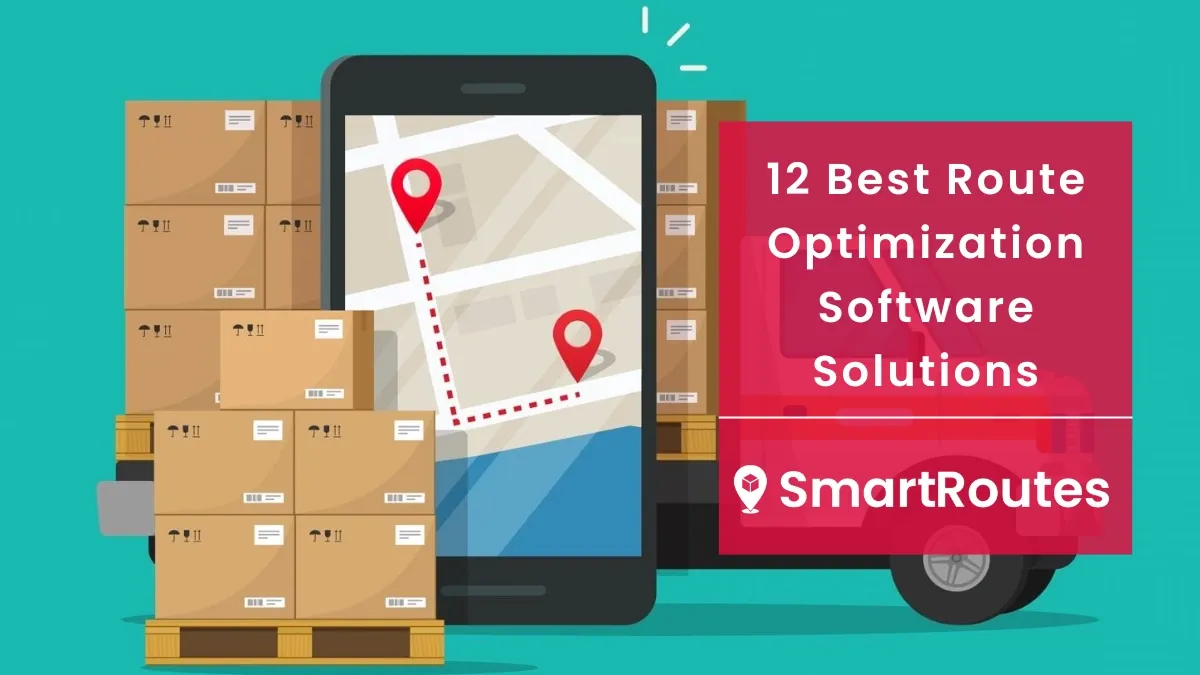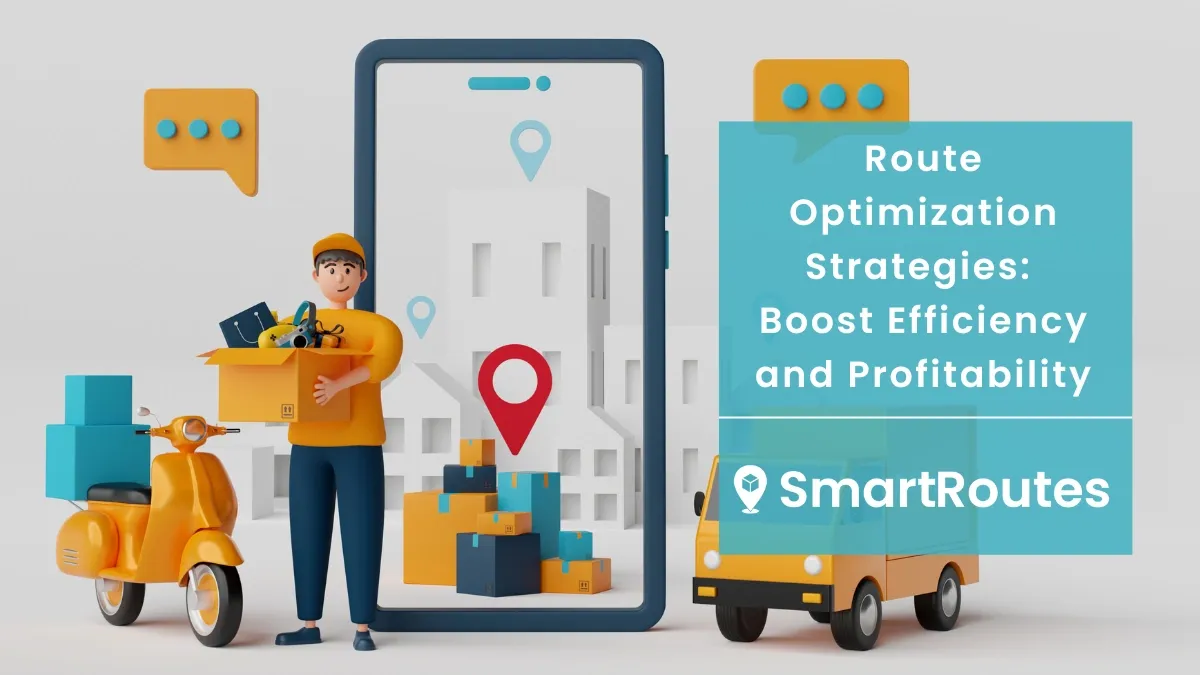Top 10 Best Routing Software for 2025: Boost Efficiency, Reduce Costs
Discover the top 10 routing software solutions to streamline your delivery operations, cut costs, and boost efficiency. Find the best fit for your business—try SmartRoutes free today!
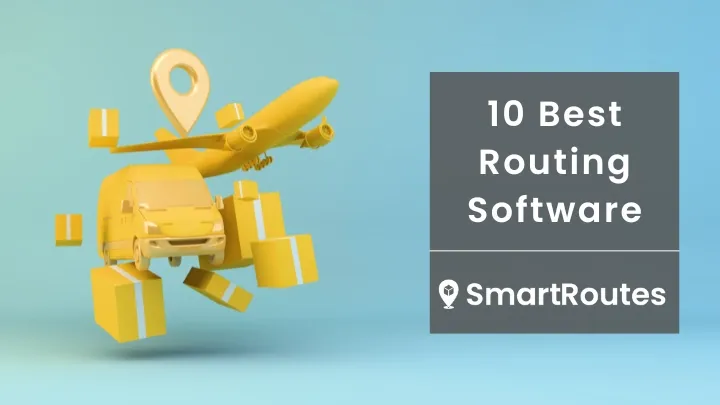
Routing Doesn't need to be a daily puzzle-solving exercise
If you’re still planning delivery routes manually using spreadsheets and Google Maps, you're not alone. Many business owners and delivery managers start out this way. But as your fleet grows—whether that’s three vans or thirty—manual planning becomes a full-time job.
Your time is better spent growing your business, not moving stops on a map.
The good news? Routing software has come a long way. Most route planning tools are as easy to use as Google Maps, but they are designed specifically with delivery in mind.
Today’s tools are:
- Easy to learn
- Built for businesses with delivery fleets
- Proven to cut costs and improve delivery success and reliability
In this guide, we review the 10 best routing software tools of 2025, highlight their pros and cons, and explain how they stack up based on key factors like ease of use, route optimization, driver support, and customer satisfaction.
What Makes Great Routing Software in 2025?
Before we dive into the list, here are the six core criteria we used to evaluate each tool:
- Ease of use & onboarding speed: How fast can a new user go from sign-up to routing? How easy is it for route planners, dispatchers, and driver to use?
- Advanced route optimization capabilities: Does the algorithm and software handle time windows, real-time traffic updates, vehicle capacity, constraint handling, driver territory zoning, and more?
- Driver experience: Is there a dedicated mobile app? POD? Real-time updates? Can it accommodate driver preferences?
- Scalability: Can it handle more vehicles, routes, orders, and users as your business grows?
- Support & training: Does the company offer helpful onboarding, customer success, and live support?
- Value for money: Are the features worth the price?
SmartRoutes Routing Software
Streamline your entire delivery process, all from one platform

How Routing Software Works
Routing software simplifies delivery management by automating route planning and optimization. Here’s how the process works:
1. Import Delivery Data
- Upload customer addresses via spreadsheet, API, or direct integration with an ERP or order management system.
- The software automatically processes the data, eliminating manual entry errors.
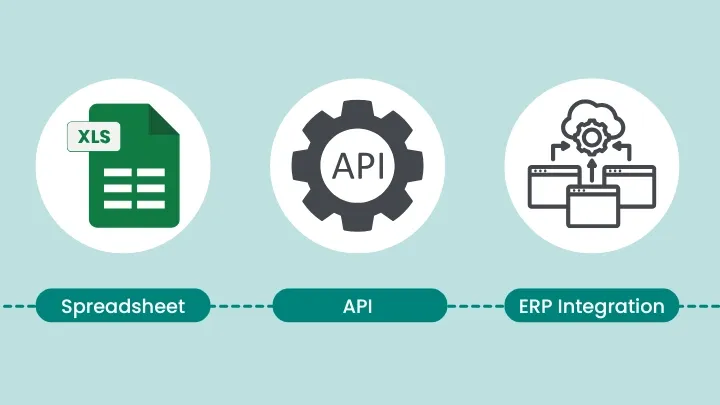
2. Optimize Routes
- The system calculates the most efficient delivery sequence based on factors like time windows, driver availability, and vehicle capacity.
- Routes can be organized by zones or territories for better efficiency.
3. Dispatch to Drivers
- Optimized routes are sent directly to drivers via a mobile app.
- Drivers receive turn-by-turn navigation and any special delivery instructions.
4. Live Tracking & Updates
- Dispatch teams can monitor driver locations, route progress, and delivery statuses in real time.
- Proof of delivery (POD) photos, signatures, and failed delivery reasons are instantly accessible.
5. Make Adjustments if Needed
- If a new order comes in or a driver needs to reroute, updates can be made on the fly.
- Drivers receive push notifications for any changes to their route, ensuring smooth and efficient deliveries.
By automating these steps, routing software reduces planning time, improves efficiency, and enhances the overall delivery experience.
Benefits of Routing Software
- Save time, fuel, and increase efficiency: Delivery routing software helps you optimize delivery routes, reducing unnecessary driving time and fuel consumption, which leads to significant cost savings and improved overall delivery efficiency.
- Optimize routes on the fly: With real-time updates, you can adjust routes quickly to accommodate unexpected changes such as new orders, traffic disruptions, or road closures, ensuring deliveries stay on schedule.
- Scalable for business growth: As your business grows, your routing software can scale with you. It can handle an increasing number of deliveries, optimize more complex routes, and offer additional features to meet your expanding needs.
- Improve customer satisfaction: Accurate delivery ETAs and real-time tracking ensure that customers are always in the loop about their deliveries, reducing the chances of missed or delayed deliveries and enhancing customer satisfaction.
- Reduced operational costs: By minimizing fuel consumption, vehicle wear and tear, and time spent on the road, routing software helps to reduce the costs associated with running a delivery fleet, making your operation more cost-effective.
The 10 Best Routing Software Tools for 2025
We’ve included tools for all business sizes, from solo couriers to large-scale logistics operations. Each entry includes Capterra or review site links where relevant.
1. SmartRoutes
- Best for: Delivery businesses looking for intuitive, fully supported route optimization software for small to mid-sized fleets
- Capterra link: SmartRoutes on Capterra
What makes it great: SmartRoutes is built for busy teams who don’t want to wrestle with complex software. The User Interface (UI) is clean and modern, making it ideal for delivery route optimization with minimal training. Most users are up and running within an hour.
Larger logistics operations can be longer. Calibration of the software for things like vehicle, driver, depot/warehouse configurations can take a some planning and implementation time. That's why we have a specialist technical team that works directly with fleet operators and logistics staff to make sure it's optimized for the needs of an individual business and their delivery workflows.
Features:
- Advanced route optimization (with time windows, capacity, zones)
- Recurring delivery scheduling
- Live driver tracking and ETA updates
- Proof of delivery (photos, signatures, failed attempts)
- Real-time updates and rerouting for dynamic delivery route changes
- Customer Notifications (SMS and email with estimated delivery times [ETD])
- Customer tracking portal
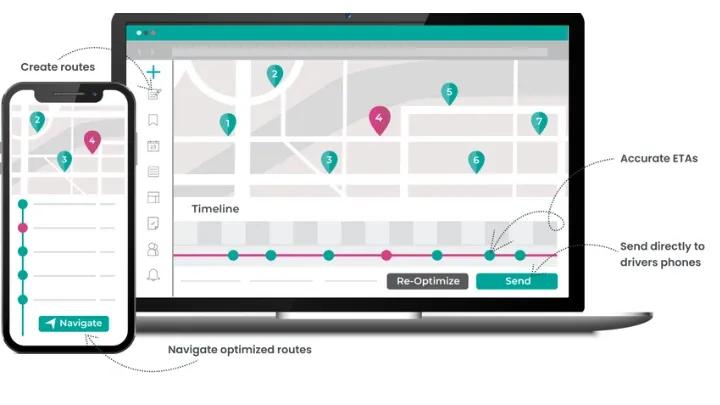
SmartRoutes also integrates seamlessly with popular navigation apps like Google Maps, Apple Maps, and Waze, giving you the flexibility to use your preferred navigation tool.
Support that stands out: Unlike many competitors, SmartRoutes offers full onboarding, video training, and ongoing live support—without extra cost.
Pricing: Tiered plans based on vehicle count. Free trial available.
Learn more: Route Planning Software | Route Optimization Software
2. Onfleet
- Best for: Large-scale operations needing detailed analytics
- Capterra link: Onfleet on Capterra
Pros:
- Real-time tracking and automatic driver assignment
- Advanced analytics dashboard
- Highly customizable notifications
Cons:
- Expensive for small businesses (starting from ~$550/month)
- Limited historical data retention on basic plans
Features: POD, ETA tracking, integrations with Shopify and more
3. OptimoRoute
- Best for: Mid-sized delivery teams focused on efficiency
- Capterra link: OptimoRoute on Capterra
Pros:
- Powerful optimization algorithm
- Flexible scheduling for days/weeks ahead
- Easy CSV imports and dispatching
Cons:
- Dated interface design
- Takes some effort to master advanced settings
4. Track-POD
- Best for: Companies needing robust proof-of-delivery
- Capterra link: Track-POD on Capterra
Pros:
- Easy-to-use driver app
- Real-time tracking and barcode scanning
- Digital POD with geotags
Cons:
- Reporting customization limited
- Support response times vary
5. Routific
- Best for: Businesses looking for simple route optimization
- Capterra link: Routific on Capterra
Pros:
- User-friendly UI
- Live route updates
- Fast onboarding
Cons:
- Fewer integrations
- Order-based pricing makes it less affordable and predictable for high-volume shippers
6. Circuit
- Best for: Courier teams with 1–10 drivers
- Capterra link: Circuit on Capterra
Pros:
- Easy mobile app with great navigation interface
- Affordable pricing
- Estimated arrival windows
Cons:
- Limited optimization compared to larger tools
- Fewer features for fleet managers
7. DispatchTrack
- Best for: Companies needing customer-facing delivery communications where customer experience is critical
- Capterra link: DispatchTrack on Capterra
Pros:
- Customer ETA notifications
- Reporting dashboards
- Works well for white-glove delivery
Cons:
- Some users report steep learning curve
- Higher-tier pricing for full features
8. Zeo Route Planner
- Best for: Small courier services and individual drivers
- Capterra link: Zeo on Capterra
Pros:
- Budget-friendly
- Includes POD and live location sharing
Cons:
- More limited in terms of features available than others on this list
- Some features gated behind higher-tier plans
9. Upper
- Best for: Small fleets looking for great UX and fast routing
Pros:
- Clean interface
- Route optimization with drag-and-drop editing
- Flexible pricing tiers
Cons:
- Some US users report support issues due to time differences
- Limited driver behavior analytics
10. Stream
- Best for: Logistics operations with deep backend integrations
- Capterra link: Stream on Capterra
Pros:
- Fleet tracking + route optimization
- Detailed delivery performance reports
Cons:
- Expensive
- Older UI compared to newer tools
Find the Right Routing Software for Your Business
Choosing the best routing software depends on your business’s specific needs. If you’re looking for the best routing software for your business, SmartRoutes offers a robust set of features, easy-to-use interface, and great customer support—making it an excellent choice for those looking to optimize delivery routes.
Getting started with SmartRoutes is designed to be easy—even for non-technical teams:
- Upload your addresses via spreadsheet, eCommerce solution integration, or ERP
- Create your first route in <15 minutes
- Dispatch to drivers via mobile app
- Track progress and adjust live
Need help? The SmartRoutes support team is available by phone, chat, or email, and every account includes onboarding assistance.
Frequently asked questions
1. What is the difference between route planning and route optimization?
Route planning involves mapping out a path from point A to B, ensuring all stops are covered. Route optimization takes this a step further by analyzing multiple factors like driver schedules, delivery time windows and vehicle capacity to determine the most efficient sequence for stops. Businesses handling high-volume deliveries benefit most from route optimization software, as it reduces fuel costs and improves delivery times.
2. How does routing software improve delivery efficiency?
Routing software automates the process of planning and optimizing routes, reducing the time spent on manual scheduling. It minimizes unnecessary mileage, ensures drivers take the fastest and most cost-effective routes, and enables real-time adjustments if changes are needed. Many solutions also provide delivery tracking, proof of delivery, and customer notifications, improving overall service efficiency.
3. Can routing software help businesses with recurring delivery schedules?
Yes, many routing software solutions allow businesses to set up recurring delivery schedules for customers who receive shipments on a weekly, bi-weekly, or custom basis. This eliminates the need for manually planning the same routes repeatedly and ensures drivers follow a consistent, optimized path. It’s particularly useful for grocery delivery, subscription-based services, and wholesale distribution.
4. What factors should businesses consider when choosing routing software?
When selecting routing software, businesses should evaluate ease of use, integration capabilities with existing systems, pricing structure, and scalability. Key features to look for include multi-stop route optimization, real-time driver tracking, proof of delivery options, and automated customer notifications. The right software should align with operational needs and support business growth.
Frequently asked questions
1. What is the difference between route planning and route optimization?
Route planning involves mapping out a path from point A to B, ensuring all stops are covered. Route optimization takes this a step further by analyzing multiple factors like driver schedules, delivery time windows and vehicle capacity to determine the most efficient sequence for stops. Businesses handling high-volume deliveries benefit most from route optimization software, as it reduces fuel costs and improves delivery times.
2. How does routing software improve delivery efficiency?
Routing software automates the process of planning and optimizing routes, reducing the time spent on manual scheduling. It minimizes unnecessary mileage, ensures drivers take the fastest and most cost-effective routes, and enables real-time adjustments if changes are needed. Many solutions also provide delivery tracking, proof of delivery, and customer notifications, improving overall service efficiency.
3. Can routing software help businesses with recurring delivery schedules?
Yes, many routing software solutions allow businesses to set up recurring delivery schedules for customers who receive shipments on a weekly, bi-weekly, or custom basis. This eliminates the need for manually planning the same routes repeatedly and ensures drivers follow a consistent, optimized path. It’s particularly useful for grocery delivery, subscription-based services, and wholesale distribution.
4. What factors should businesses consider when choosing routing software?
When selecting routing software, businesses should evaluate ease of use, integration capabilities with existing systems, pricing structure, and scalability. Key features to look for include multi-stop route optimization, real-time driver tracking, proof of delivery options, and automated customer notifications. The right software should align with operational needs and support business growth.
5. Is routing software worth it for a 3–5 vehicle fleet?
Yes—most of our customers start when routing manually becomes unsustainable. The ROI even for small fleets is significant.
6. How long does it take to learn SmartRoutes?
Most users are live within 1 hour. Our team is there to help.
7. Can I make changes on the fly if a customer cancels?
Yes. Routes can be updated live and pushed to the driver’s app instantly.
8. What if a delivery fails?
Drivers can log failure reasons and SmartRoutes will flag it for re-delivery or customer service follow-up.
9. What makes SmartRoutes different from other delivery management systems?
Ease of use, rapid onboarding, full support, and a focus on making your life easier, not more complicated.
If you enjoyed this blog, you might also be interested in:
